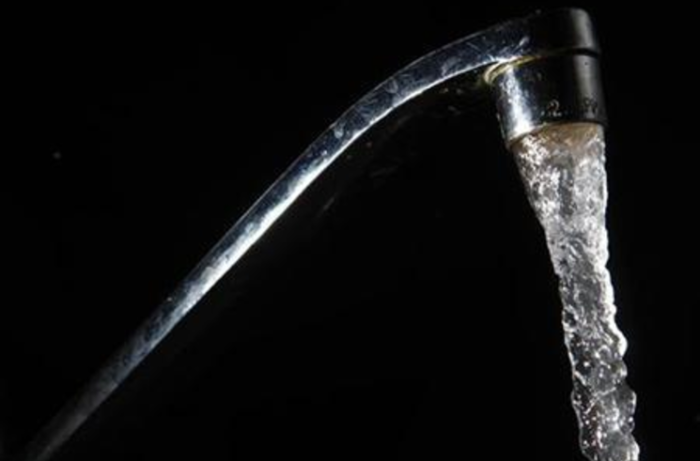Cancer-Causing Agents Detected in Tap Water Nationwid, Report Claims

Scores of potentially harmful chemicals that could lead to cancer, brain and nervous system damage, developmental harm to children, fertility problems and hormonal disruption have been detected in public water systems nationwide, according to a report from the Environmental Working Group.
The EWG, a nonprofit organization that describes itself as being "dedicated to empowering people to live healthier lives in a healthier environment," said in its report released Wednesday that they aggregated and analyzed data from almost 50,000 public water systems in all 50 states and the District of Columbia and what they found was shocking.
Some 93 chemical agents linked to an increased risk of cancer were detected in more than 40,000 systems and their levels exceeded established federal or state health guidelines which are not legally enforceable. Another 78 chemicals detected are associated with brain and nervous system damage; 63 connected to developmental harm to children or unborn babies, and 38 that may cause fertility problems and have been linked to hormonal disruption.
While the vast majority of utilities are in compliance with federal regulations, their water still often contains these contaminants in concentrations exceeding levels that some scientists say pose health risks. To enable people to make informed decisions about the quality of their water, the EWG's new Tap Water Database now provides a profile of the water quality in communities across the country.
By just entering a zip code or local utility's name in the database, users can find all the contaminants detected in tests by the utilities, as reported to federal or state authorities.
"Instead of comparing the levels of pollutants to the legal limits set by regulatory agencies ... EWG's guide relies on what the best and most current science finds are the levels that will fully protect public health, especially that of infants, children, pregnant women and other vulnerable populations," EWG said in a release.
"Americans deserve the fullest picture possible of what's in their tap water," EWG President Ken Cook said in a statement about the report. "But they won't get that information from the government or, in many cases, from their utilities. The only place they'll find that is EWG's drinking water report."
"Just because your tap water gets a passing grade from the government doesn't always mean it's safe," he asserted.
The environment watchdog group added that the Environmental Protection Agency has not added a new contaminant to the list of regulated drinking water pollutants in more than 20 years, allowing more than 160 contaminants the tests detected in the nation's tap water to go unregulated.
An EPA spokesperson told The Christian Post in an emailed statement on Thursday that "More than 90 percent of the country's drinking water systems meet all of EPA's health-based drinking water standards every day throughout the year."
America's drinking water remains among the safest in the world and protecting drinking water is one of EPA's top priorities. We take our commitment to protecting public health seriously and when issues arise, we work closely with states, local governments, and water suppliers to review and address, as appropriate.
EPA has set drinking water standards for more than 90 contaminants, including microorganisms, disinfectants, disinfection byproducts, inorganic and organic chemicals, and radionuclides.
Public water systems are required to report drinking water data to EPA, which is made available to the public in the Safe Drinking Water Information System (SDWIS). Data collected in SDWIS includes public water system characteristics, violation and enforcement information. Additionally, every five years, EPA also collects data for certain unregulated contaminants through the Unregulated Contaminant Monitoring Rule. This data is provided to utilities and can be found in EPA's National Occurrence Database.
Citizens who are concerned about their drinking water and who are served by a public water system can contact their local water supplier and ask for information on contaminants in their drinking water. They are also encouraged to request a copy of their Consumer Confidence Report. This report lists the levels of contaminants that have been detected in the water, including those by EPA, and whether the system meets state and EPA drinking water standards.
The agency noted on its website, that it's developing or reviewing regulations for certain drinking water contaminants such as Chromium (Total/Hexavalent Chromium) and the use of lead and copper pipe fittings.
In New York and New Jersey, for example, chemicals linked to cancer and child development problems, such as perfluorooctanoic acid, were detected in public water systems.
"It's found in a large number of systems in New Jersey and across the country," David Andrews, a senior scientist for EWG, told PIX 11.
He further explained that PFOA is not regulated by federal agencies so public utilities do not have to tell consumers if it's found in their drinking water.
"It is really concerning for consumers," Andrews said.
"What is legal incorporates economic, political considerations. Lobbyists get involved. It's really a trade-off of balancing the potential health impacts with these other factors," he said. "What we've presented here is a clear display of the level of these contaminants, what the legal limit is and what a health guideline value is. What is the safe value when you're only looking at potential health impacts?"
To protect themselves, EWG urged consumers to use water filters as much as possible.
CLICK ON THIS LINK TO CHECK THE SAFETY OF YOUR WATER



























